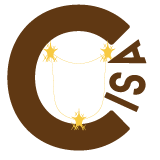Stella Maris
During one of our community meetings at the beginning of this academic year which we are about to finish, it was suggested that we should create a journal that could be the work of the community of study and research that is St. Albert’s International Centre (CISA). Explaining this proposal, perhaps for some of us a bit vague at first sight, it was said that, first of all, it would involve students who, as yet, had little experience in publishing properly scientific articles, who, nevertheless, have something to say and to share with others. The community eventually decided to initiate this magazine. After consultation with the community, the title, Stella Maris, recalling the Marian dimension and the continuous presence among us of Mary, our Mother and Sister, was chosen.
The journal we are now presenting wants, first of all, to be a space for those who want to share with others their own thoughts and observations, and the fruits of their own research, studies and personal reflections. Sometimes we will publish works done during the studies, which have already been evaluated by the respective professors; at other times, there will be works written specifically for Stella Maris. We do not want to limit ourselves to the students or the members of CISA. We invite all our Carmelite students, PhD students, researchers, specialists, professors and all our Carmelite brothers in the world, to collaborate with us. In the next issue you will have an opportunity to read some of their articles.
Normally scientific journals have a well-defined theme or a field to which the articles must belong, in order to be accepted, for example, a journal specialising in Scripture, Mariology or Spirituality. We do not want to limit ourselves to one specific field. We want to open the space to all our brothers who want to collaborate with us. Since we are an international community, the languages in which our authors write are, and will be, different. In the case of articles written in a little-used language, there may also be translations.
We decided not to establish a priori editorial norms, but to leave the structure of the article in the form originally used by the author, especially in the case of footnotes. Sometimes our communication will be conditioned by the multicultural linguistic environment from which the contribution comes, or by the culture of the author. In the case of papers done during the studies, it is enough to follow the typographical rules of the respective universities. Whatever method is followed by the university, however, the reader should be able to trace the sources used.
It is our intention to publish one or more reviews of various books read by our brothers in each edition.
We have chosen to have an online journal because it seems to be more common and more accessible, but, every three years, we hope to publish the collection of all the articles in a printed version.
We will put all the links of our publication here below:
